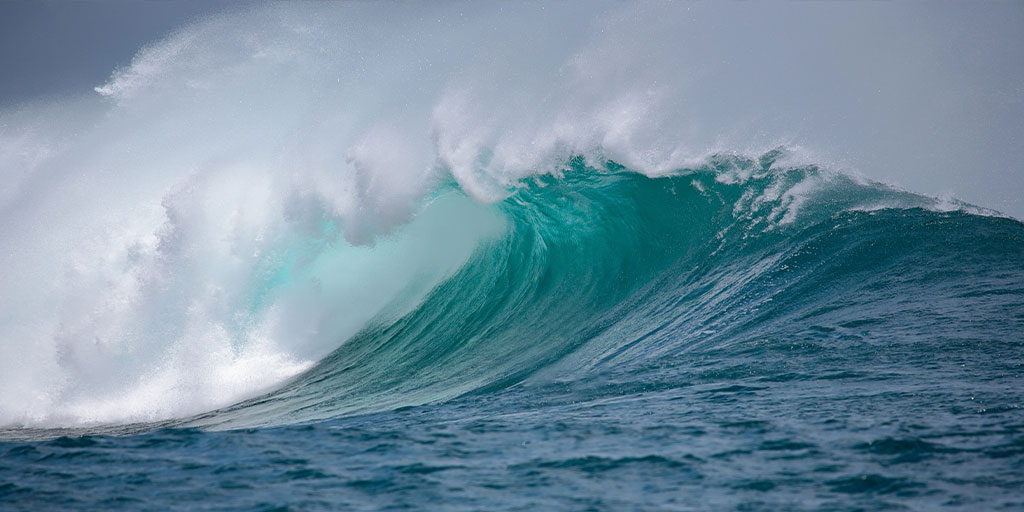
Background
As the world continues to seek viable renewable energy sources, creative approaches to solving our energy resiliency challenge will be critical. Complementary approaches with a variety of technologies working together will be necessary to provide consistent power to the utility grid.
One of those approaches, ocean wave power, offers a promising path to sustainability[iv], but is still in the early stages of development and has not yet reached technology convergence. Many of the existing approaches of wave energy technologies are based on rigid systems that depend on hinges or joints, and can have durability challenges in the rough marine environment. DEEC-Tec is an emerging area of research with the potential to harvest and convert ocean wave energy through non-rigid, non-force concentrating technologies. This technology centers on combining many small energy converters (transducers) into a single flexible structure that has the potential to harvest a broader range of energy from any motion than rigid technologies. When a network of DEEC-Tec structures is assembled to form a single device, they could create flexible energy converters by stretching, twisting, bending, expanding or undergoing other structural deformations that enable the transducers to generate energy from movement (see examples below). The individual transducers use dynamic structural deformation as their input and produce electricity as their output, and aim to be applied in the ocean wave environment.
Learn more here
Constraints
While the ultimate end product will need to meet all of the below criteria, materials that partially meet the criteria currently are in scope for this project:
- Flexible/ non-rigid (lacking highly loaded, stress or strain concentrating, rigid energy conversion components)
- Compatible with the ocean/marine environment
- Generate electricity
- Avoid generating toxic emissions
Possible Solution Areas
- Distributed Embedded Energy Converter Technologies
- Soft Robotics
- Electro-active Polymers
- Printed Flexible Objects
- Distributed Pumps / Actuators
- Distributed Belts
- Bio-inspired Designs
- Piezoelectric
- Origami Mechanics
- Meta Materials
- Micro-manufacturing
- Rubber / Tires
- Energy Conversion via Metal Nanolayers
- Micro-electro Mechanicals (MEMs)
- Inflatables
- Compliant Mechanical Manipulators
- Polymers
- Elastomers
Desired Outcome of the Solution
Seeking to understand the landscape of innovators and potential solution providers for non-rigid wave energy conversion that could be applied to the ocean environment.
Researched Ridged Wave Energy Converter Technologies Include:
[i] The WPTO’s website can be found at water.energy.gov
[ii] https://www.nrel.gov/water/marine-energy.html
[iii] https://www.nrel.gov/water/distributed-embedded-energy-converter-technologies.html
[iv] https://www.energy.gov/eere/water/advantages-marine-energy
[v] https://openei.org/wiki/PRIMRE/MRE_Basics/Wave_Energy
[vi] https://openei.org/wiki/PRIMRE/Databases/Projects_Database/Technologies
Related Tech Needs
Seeking: CO₂ Capture Technologies for Industrial Applications
Seeking: Debris Mitigation and Removal for Dams
Photo Credit: Kanenori from Pixabay
